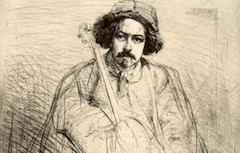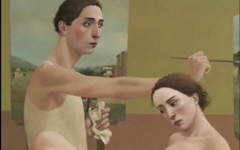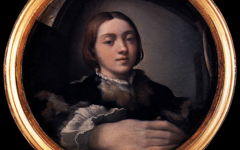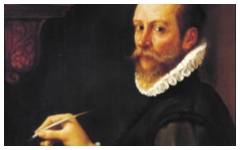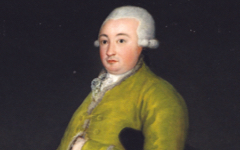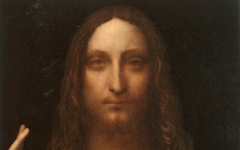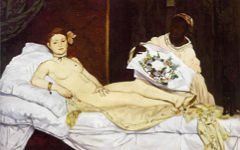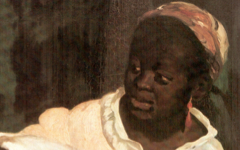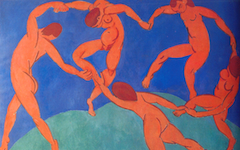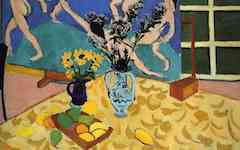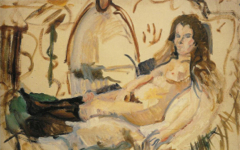Mirrors
Mirrors and reflections are enormously important in art, and so common a theme, that you should keep an eye out for them: they will help explain the work’s underlying meaning. Here’s why. The mind has been likened to a mirror for as long as humans have written, painted, sculpted, etched and composed poetry. The Greek root for Plato’s word idea, eidos, literally means not just image or likeness but an image reflected in water or mirror.{ref1} Even in English, minds reflect and speculate. So, since all true art depicts the artist’s mind, mirrors and reflections are bound to play a highly significant role. Mirrors suggest that the viewer should turn inwards to gain self-knowledge rather than outwards to the natural world. In paintings, the discovery that the surface itself represents a mirror contradicts the very principles on which conventional art history is based: that artists depict the world outside. Indeed it is only once you accept that artists do not depict material reality that you begin see so many mirrors in art because you cannot see what you do not believe.
Most Recent Articles
An excellent example of the invisible mirror in art
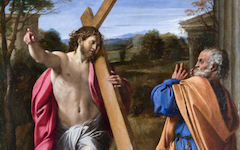
Carracci’s Christ appearing to St Peter on the Appian Way (1601-02)
All Articles (Alphabetical by Artist, then Title)
Is this merely a scene of everyday life or something more important?
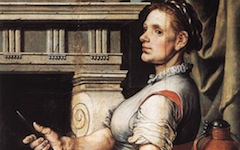
Aertsen’s Cook in front of the Stove (1559)
Make sure you always know an artist's real name, the one the artist actually used. It's a very useful tool for interpretation.
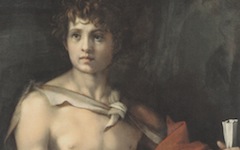
Andrea Del Sarto’s St John the Baptist (c.1523)
Even anonymous art can be enjoyed through EPPH's methodology
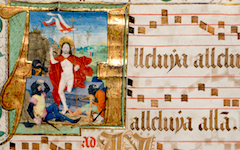
Anonymous Antiphony from Lausanne (c.1485-90)
See Artemisia Gentileschi turned a biblical story into a lesson about art and reality
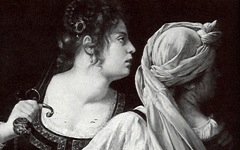
Artemisia Gentileschi’s Judith and Her Maidservant with the Head of Holofernes
Pastoral genre scenes, although invented by Boucher, abide by art's traditions
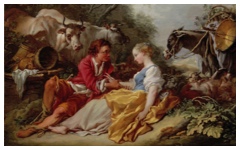
Boucher’s Pastoral landscape with a shepherd and shepherdess (c.1730)
Learn how additions to a painting's narrative often provide access to the composition's underlying meaning
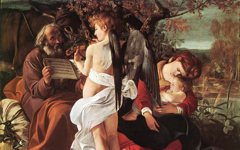
Caravaggio’s Rest on the Flight into Egypt (c.1597)
An excellent example of the invisible mirror in art

Carracci’s Christ appearing to St Peter on the Appian Way (1601-02)
Courbet's reflection on his own mind will help you recognize a similar technique elsewhere

Courbet’s The Lovers (1844)
See how a self-portrait viewed through a different perspective changes everything

Courbet’s The Wounded Man (1844-54)
Find out how to enter an artist's imagination with a bit of your own

Delacroix’s Arab with His Steed or Turk Leading His Horse (c. 1832-3)
Here, in a novel turn, the American artist turns a paintbrush into the oars of a scull

Eakins’ The Champion Single Sculls (1871)
What you can see in a self-portrait when you think creatively. Indeed it's your job to become the painter...
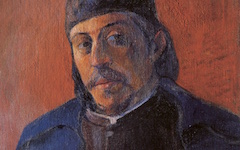
Gauguin’s Self-portrait with a Palette (c.1893-4)
Even at 17, Giacometti understood the hidden meaning of art
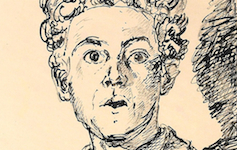
Giacometti’s Self-portrait with Brush (1918)
Think about who you are if, for instance, you are not yourself
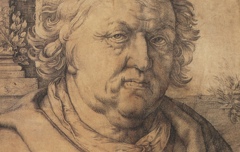
Goltzius’ Portrait of Jan Govertsz van der Aar as St. Luke (1614)
Don't take a portrait at face value because art is never quite what it seems
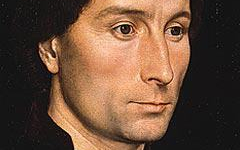
Hans Memling’s Portrait of Tommaso di Folco Portinari (c. 1470)
Don't get misled by a charming scene. There's always more to see in the work of a real artist.

Homer’s The Boat Builders (1873)
What contemporary artists like Jasper Johns does is what great artists have always done. Those that do not will not last. A century from now they will be forgotten by all but historians.
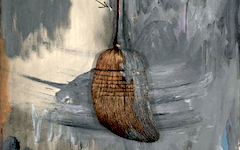
Jasper Johns’ Fool’s House (1964)
If a hand is missing, can it still represent the artist's craft?
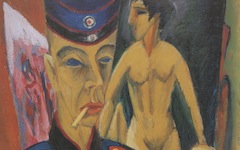
Kirchner’s Self-Portrait as Soldier (1915)
History and the politics of the moment never trumps self-knowledge and self-reference as the 'sine qua non' of art

Kollwitz’s “Down with Abortion Clause” Poster (1924)
Leonardo's closely observed landscape turns into something else entirely but only if you expect it
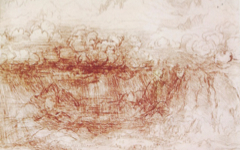
Leonardo’s Storm Over the Alps (c.1499)
Once again, see how the hilt of a sword signs the artist's name

Lotto’s Judith with the Head of Holfernes (1512)
This angel is not just a charming detail but central to the whole conception of the altarpiece
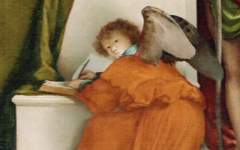
Lotto’s San Bernardino Altarpiece (1521)
Catching a glimpse of the divine or true good in our own being can be the start of a spiritual transformation as Lotto shows
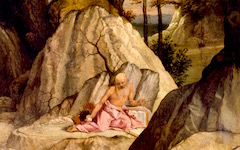
Lotto’s St. Jerome (c.1506)
Learn how "every painter paints" himself makes logical sense of even the most confused compositions

Lotto’s Virgin and Child with Saints Roch and Sebastian (c.1522)
This early painting by Manet has always troubled interpreters because it seems to make no apparent sense. Its explanation here, though, will help you understand paintings by Manet, Velazquez and other artists too.
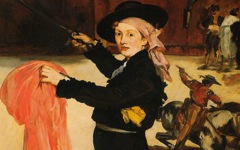
Manet’s Mlle. V in the Costume of an Espada (1862)
See how Manet identifies with a female artist of his own acquaintance, probably without her even knowing

Manet’s Before the Mirror (1876)
Everyone knows that Boating is a masterpiece. Why is it so difficult to explain?

Manet’s Boating (1874)
Skating on ice is like drawing lines on the mirrored surface of the artist's mind

Manet’s Skating (1877)
Keep an eye out for smoke. It's a common symbol for the imagination and the creation of art.
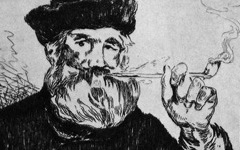
Manet’s Smokers
A good example of how the "errors" in a painting are really the key to its meaning
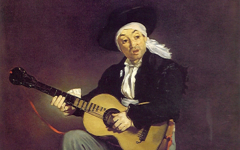
Manet’s The Spanish Singer (1860)
A mysterious drawing that has never made sense is now explained simply

Michelangelo’s Archers Shooting at a Herm (c.1530) Part 1
Always look for what is odd. It's often there where you'll find a breakthrough in meaning
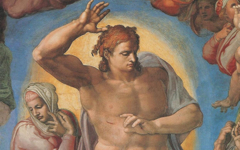
Michelangelo’s Christ in the Last Judgment (1534-41)
Did you know that....? There's so much to see for the first time, even in the most familiar images
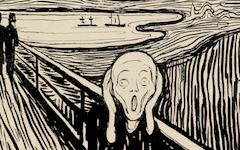
Munch’s The Scream (1895)
© Simon Abrahams. Articles on this site are the copyright of Simon Abrahams. To use copyrighted material in print or other media for purposes beyond 'fair use', you must obtain permission from the copyright owner. Websites may link to this page without permission (please do) but may not reproduce the material on their own site without crediting Simon Abrahams and EPPH.
